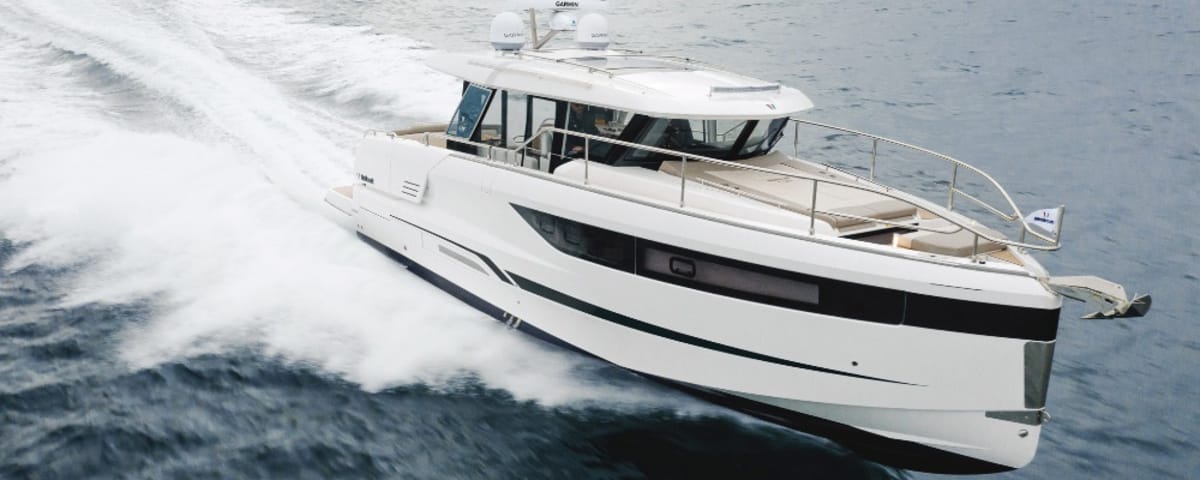Marine vs. Land-Based Battery Chargers: Key Differences and Why They Matter
When it comes to keeping your batteries charged, whether on land or at sea, the type of charger you use makes a significant difference. While a basic land-based charger might seem like a cost-effective option, marine chargers are specifically designed to withstand the harsh conditions of a boat and provide optimal charging for various battery types.
The Fundamentals: Land-Based Chargers
A standard land-based charger typically consists of a transformer that converts 230 volts AC to 12 or 24 volts DC. This voltage is then rectified using diodes to make it compatible with batteries. However, using such a charger requires disconnecting the battery from the circuit and closely monitoring the charging process. Older marine chargers often used this basic transformer/rectifier principle but adapted it for boat usage.
Marine Chargers: Safety and Specifications
Using 230 volts on a boat requires specific safety precautions. Marine chargers are designed with these in mind:
- Permanent Installation: Marine chargers should be permanently installed and protected by a differential circuit breaker. They should be hard-wired to the batteries, not connected with clips.
- Multiple Battery Banks: Boats often have multiple battery banks (e.g., for engine starting and instruments/comfort). A marine charger should have multiple outputs to charge each bank independently.
- Battery Technology Compatibility: Marine chargers must be compatible with various battery technologies (wet cell, gel, AGM, and lithium). They should offer different charging curves to suit each type.
- Full Charge and Power Supply: A good marine charger should fully charge the batteries and, once charged, provide power to onboard electrical devices within its power limits.
To meet these criteria, marine chargers use a regulation circuit to program the output voltage and current based on the battery technology. They also include a charge distributor to recharge multiple battery banks.
The Evolution of Battery Chargers: Ditching the Transformer
One of the most significant advancements in charger technology has been the elimination of the transformer. Transformers are heavy and sensitive to voltage and frequency fluctuations. If the input voltage drops below 230 volts (common at docks), the output voltage will also decrease, reducing the charging current. Additionally, transformers designed for 50 Hz (Europe) can overheat and perform poorly in areas with 60 Hz (e.g., the United States).
“The shift away from traditional transformers has led to more efficient and reliable marine chargers.”
Why Marine Chargers Cost More
The price difference between a standard automotive charger and a quality marine charger can be significant, sometimes as much as fivefold. This difference is justified by the use of advanced switching technology, which makes the charger suitable for the demanding conditions on a boat.
Switching Technology: A Game Changer
Switching technology replaces the heavy, voltage- and frequency-sensitive transformer with an electronic system derived from computer power supplies. This approach uses a three-phase charging process:
- Boost Phase: The charger delivers maximum current at a relatively low voltage (12.5-13 volts). The current gradually decreases as the voltage increases to the maximum programmed level.
- Equalization Phase: The charger balances current and voltage to complete the charging process.
- Floating Phase: Once fully charged, the charger switches to a floating mode, providing a small maintenance current.
The boost phase recharges the battery to about 80%, while the equalization phase completes the charge. A full cycle typically takes 8-10 hours. Modern chargers accept input voltages between 90 and 265 volts and frequencies between 47 and 65 Hz, with automatic voltage/frequency detection. Some models also feature charging curves that adapt to different battery types and resume charging after interruptions (intentional or due to power outages).
While switching chargers offer many advantages, they also have a drawback: they are less repairable. Traditional chargers could be fixed by replacing individual components like transformers or diodes. Switching chargers have all components integrated onto a single board, which must be replaced if there is a problem.
Modern Charger Features
Battery charger manufacturers have adapted to new demands related to battery technology, onboard equipment, and shipyard requirements. Key features of the latest generation of chargers include:
- Silent Operation: No cooling fan, with heat dissipation via natural convection.
- Multiple Independent Outputs: Typically 2-4 outputs.
- Automatic Network Detection: Supports 90-265 volts and 47-65 Hz.
- Four-Stage Charging: Boost, floating, automatic refresh (to prevent sulfation), and automatic re-boost (if needed).
- Selectable Charging Curve: Adapts to different battery types.
- Remote Control: CAN-Bus and optional NMEA network connection.
More Than Just a Charger: A Power Supply
When connected to shore power or a generator, a marine charger not only recharges batteries but also powers onboard electrical devices. Once the batteries are fully charged, the charger’s current is used to supply power to the boat’s systems, up to its maximum capacity. For example, a 40-amp charger can supply up to 40 amps of power. If the power demand exceeds this, the excess will be drawn from the batteries.
Proper Installation and Equipment
The charger should be permanently installed close to the batteries, with its 230-volt power supply protected by a differential circuit breaker. Choose a well-known brand designed for marine use. Size the charger according to the battery bank capacity. Older chargers were typically sized at 10% of the battery capacity, but modern switching chargers can be sized up to 15-20%. For example, a 200 Ah battery bank would require a 30-40 amp charger. If using lithium batteries, ensure the charger is compatible.
Making the Right Choice
It’s crucial to choose a widely distributed product and brand with good after-sales service. Avoid products that are not well-represented in the marine market or those designed for land-based use, especially automotive chargers. It’s better to choose a less powerful marine model, which will take longer to recharge the batteries, than one that will deteriorate quickly on a boat and damage the batteries.
Enjoyed this post by Thibault Helle? Subscribe for more insights and updates straight from the source.


